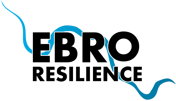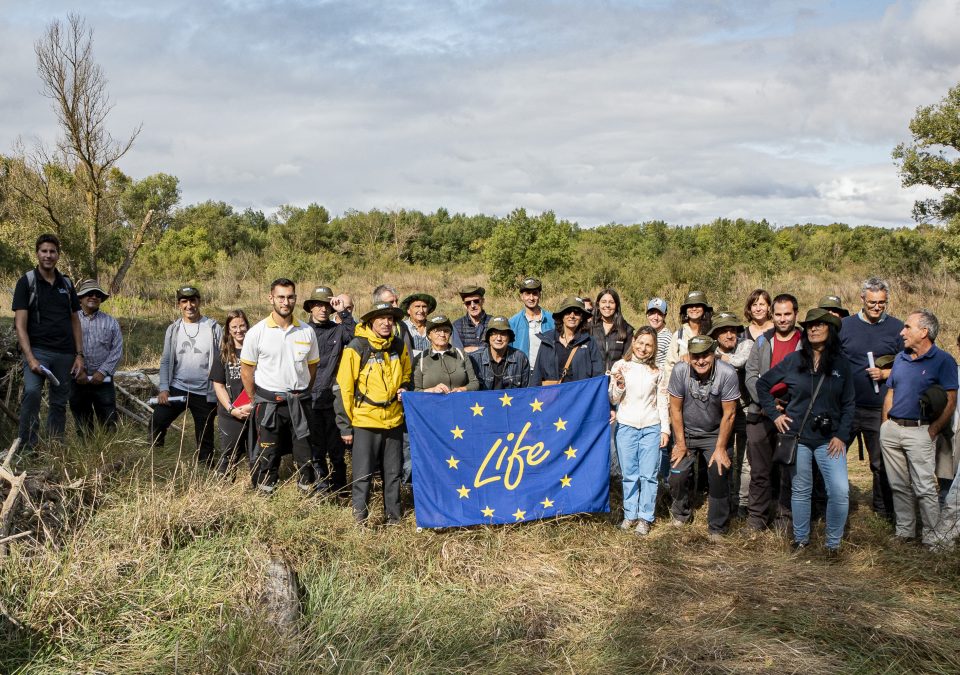The LIFE Ebro Resilience P1 project has experienced an intense year 2023 with significant progress, both in the implementation of adaptation measures to reduce the risk of flooding in the two planned sections (Alfaro, La Rioja – Castejón, Navarra and Osera de Ebro – Fuentes de Ebro, in Zaragoza), and in the actions of dissemination, communication, social participation and capacity building and exchange of knowledge and experiences in technical forums.
The Resilience proposal is backed and promoted by the partners, since administrative coordination is one of its keys: the Ministry for Ecological Transition and the Demographic Challenge (MITECO), through its companies TRAGSA and TRAGSATEC; the Ebro Hydrographic Confederation; the Government of La Rioja; the Government of Navarra, through Gestión Ambiental de Navarra, S.A. (GAN-NIK); the Government of Aragón and the Aragonese Water Institute.
The project was approved by the European Commission with a budget of 13,310,350 € and 55% European funding .
Milestones among adaptation actions
- Zone 1 Alfaro, La Rioja- Castejón, Navarra:
- In 2023, the works for the morphological adaptation of the Ebro in the meander of La Roza, in Alfaro, were completed. This intervention has been carried out by the Confederación Hidrográfica del Ebro and has meant the recovery of 22 hectares as a fluvial space. This space has also been included as a protected area in the Natura 2000 Network “Sotos y Riberas del Ebro”.
This intervention, which inaugurated the works of LIFE Ebro Resilience P1, will be completed with the environmental restoration of the area, which includes planting by the Government of La Rioja.
- The project for the reconnection of old river branches in the Soto de Alfaro (Soto de Tamarigal) has been drafted, with the participation of the stakeholders, and will be executed in 2024, regenerating clogged areas of undergrowth.
- Social participation has been crucial in 2023 in the future of the project to adapt the meander of El Señorío, in Castejón, Navarra, which aims to recover 23 hectares of river space and which will be executed in 2024. This year there have been meetings with the surrounding municipalities (Castejón, Valtierra and Cadreíta), public sessions have been held on the proposal and the conclusions of the report of the Historical Heritage Service of the Government of Navarre on the archaeological sites near the intervention area have been presented.
All these interventions are integrated in the demonstration part of the Project and are added to other actions of the Ebro Resilience Strategy in the so-called Combined Tranche of Actions.
- Zone 2 Osera de Ebro – Fuentes de Ebro, in Zaragoza, a section of pilot adaptation actions aimed at adapting 350 hectares of agricultural land to the risk of flooding and the recovery of 16 hectares of river space:
- The first works focused on the adaptation of the irrigation system of the Irrigation Community of the Huerta del Ebro in the meander of Aguilar, reducing its exposure to flooding, have started.
This action is being carried out by the Department of Agriculture, Livestock and Food of the Government of Aragon through the public company TRAGSA, with a budget of 1,156,749 euros.
- In addition, in 2023, the two main phases of the project have been advanced: the reduction of the constrictions and will recover fluvial space with the recessing of the defense dike, moving them away from the channel in the meander of Aguilar and the mejana del Conde and on the other hand, one of the most innovative interventions of the LIFE proposal: the creation of so-called buffer zones for lateral
buffer zones for lateral flows.
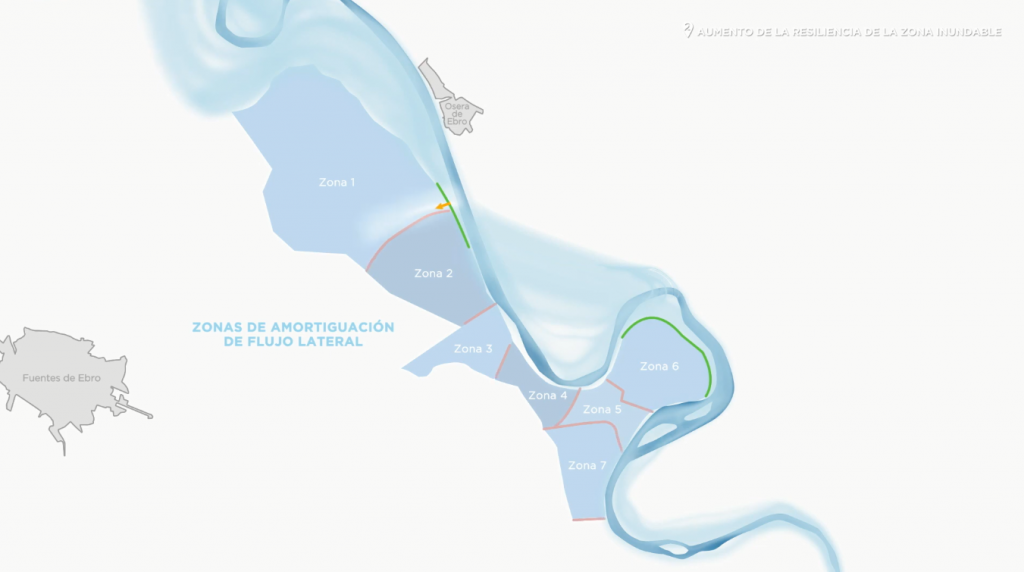
All the actions implemented have involved the participation and interaction with stakeholders through the project’s own mechanisms.
An action common to both sections and pioneering for the depth of the analyses, is the application of technology for hydraulic modeling and for the elaboration of cost-benefit analyses of the interventions .
In each area, field study techniques have been applied and have also been subject to modeling to recreate the current situation and the effects with the application of different proposals. The cost and sustainability of each solution and the social and environmental benefits are studied.
Public participation milestones
Another of the main lines of work has been social participation, with more than 40 actions, including meetings of stable groups, which monitor interventions and make proposals; public forums and informative conferences.
The LIFE Project is making an important effort to achieve the involvement of the local population, creating spaces for participation that are a milestone in flood risk management, as there are no previous experiences with the same scope, neither in Spain nor in Europe.
In addition to the meetings of the Stable Conflict Transformation Group and the so-called co-creation groups, public sessions and workshops have been held on the following topics open to the whole society to visit the intervention areas, such as the one carried out in Soto de Alfaro (or Soto de Tamarigal); to learn about the project of El Señorío, in Castejón, or for such a novel action as analyzing the future recreational uses of the space freed in the meander of La Roza.
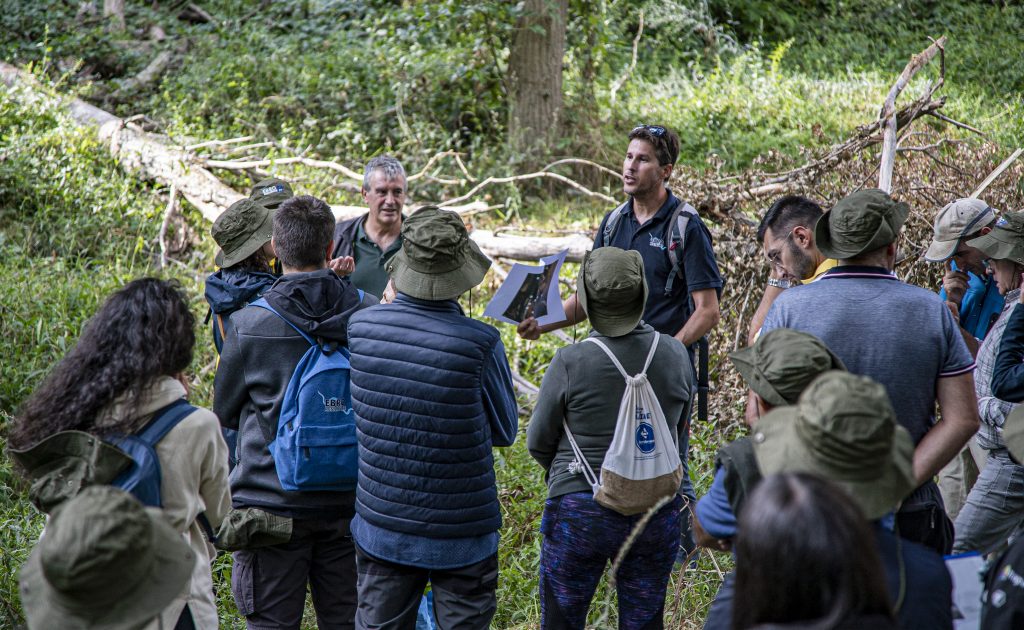
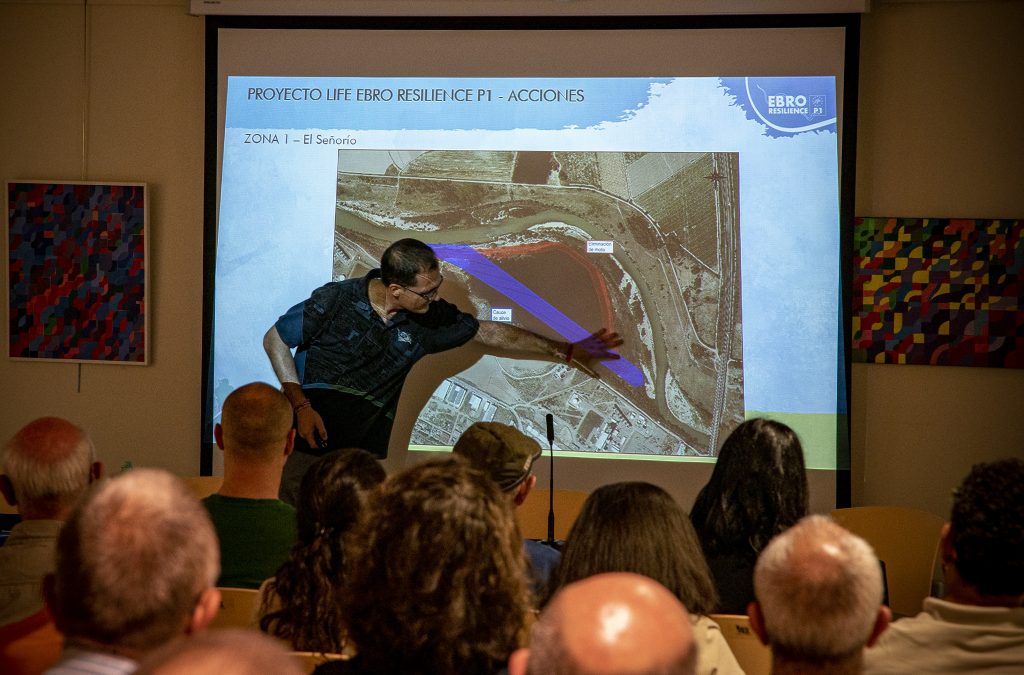
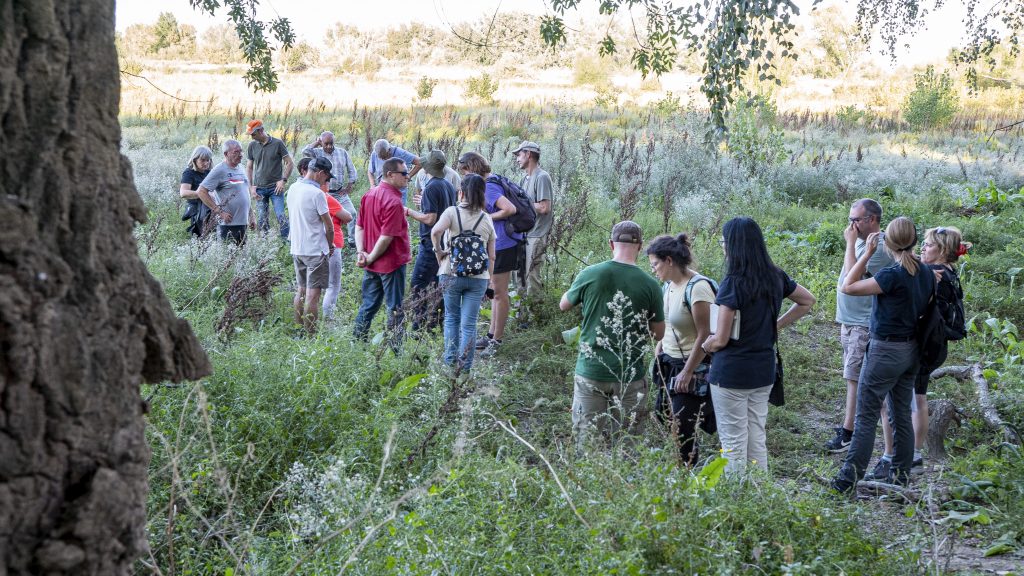
This year, through the participation of the groups, the location of the future monitoring posts that will be part of the virtual platform for monitoring the interventions, a citizen science experience to increase the general knowledge of the river and the actions, has also been defined.
The LIFE Ebro Resilience P1 project also has a detailed social capacity building plan. A line of action to increase the population’s knowledge of the river and the phenomenon of floods, for which eight types of informative materials are being prepared and 16 campaigns are planned for different sectors of the population (technicians, educational sector, communicators, primary sector, environmental sector, general public…).
During these months, work has been carried out on the development of educational and informative materials and meetings have been held with interested sectors: education, media and journalism students. For the latter, the conference “Information and extreme events” was held.
In addition to participation and social involvement, there are also milestones in the dissemination and communication of the project and its philosophy. LIFE Ebro Resilience P1 has reinforced the contents and new information sections of its reference website www.ebroresilience.com with a specific space for the project and has launched an English version of the page.
The aim is to reach different levels of public, the first one being the riparian population of the areas involved, but also the general public from the primary sector, the educational sector, the local and regional administration, technicians, the media… For this reason, different information channels have been set up, such as a monthly newsletter, WhatsApp and Telegram channels and various social networks, such as X (Twitter), Facebook, LinkedIn, Instagram, YouTube and a Tik-Tok channel is being prepared that will serve to access the young audience with which the project is also working.
Milestones in knowledge sharing
The technical team has actively participated in congresses, conferences and technical sessions, disseminating the proposals of the LIFE Ebro Resilience P1 Project and making contact with other adaptation project work teams.
In addition, he hosted the delegation from the Water Resources Agency of the Government of Poland and the delegation from the Ministry of Water Management and Irrigation and the Ministry of Energy and Dams of South Sudan.

